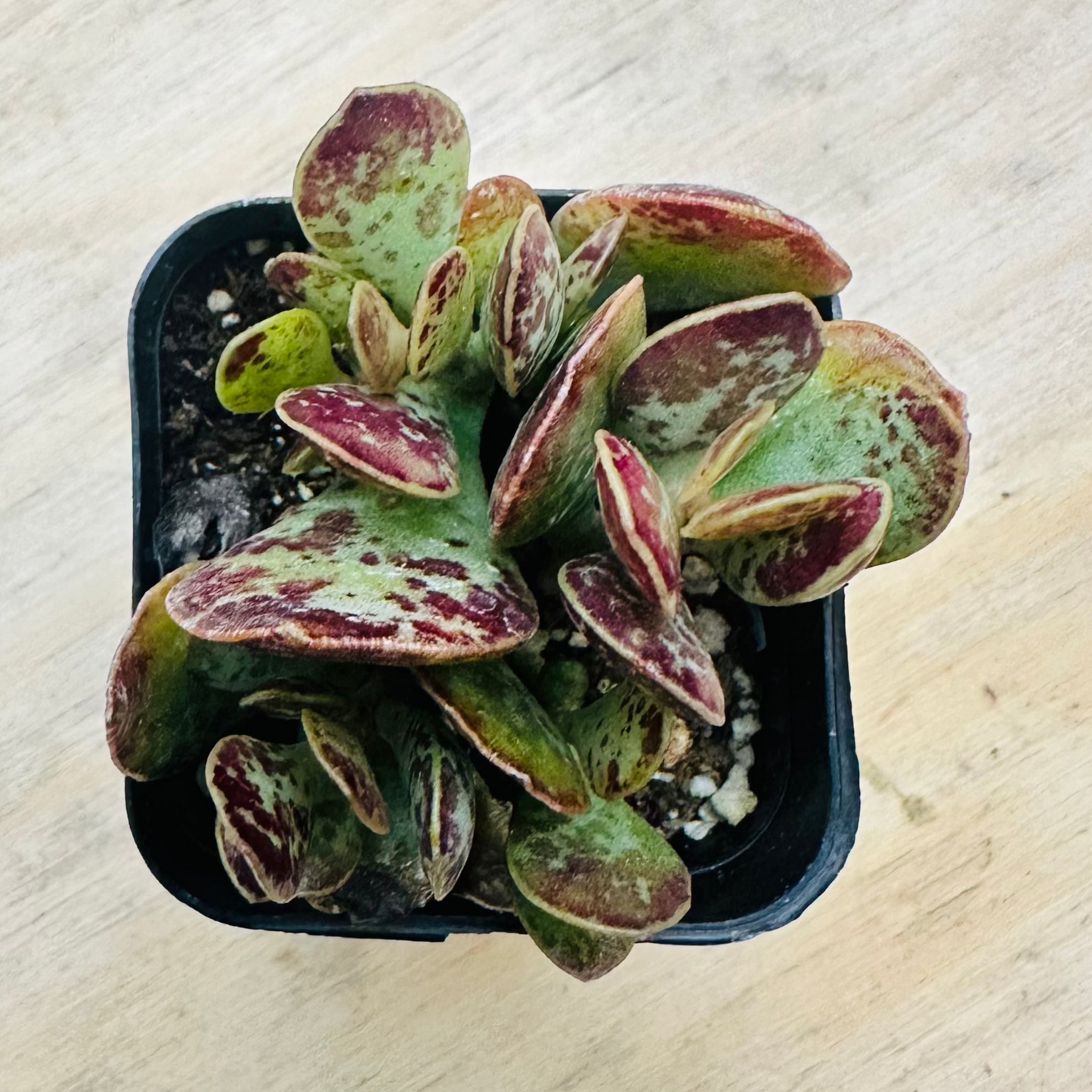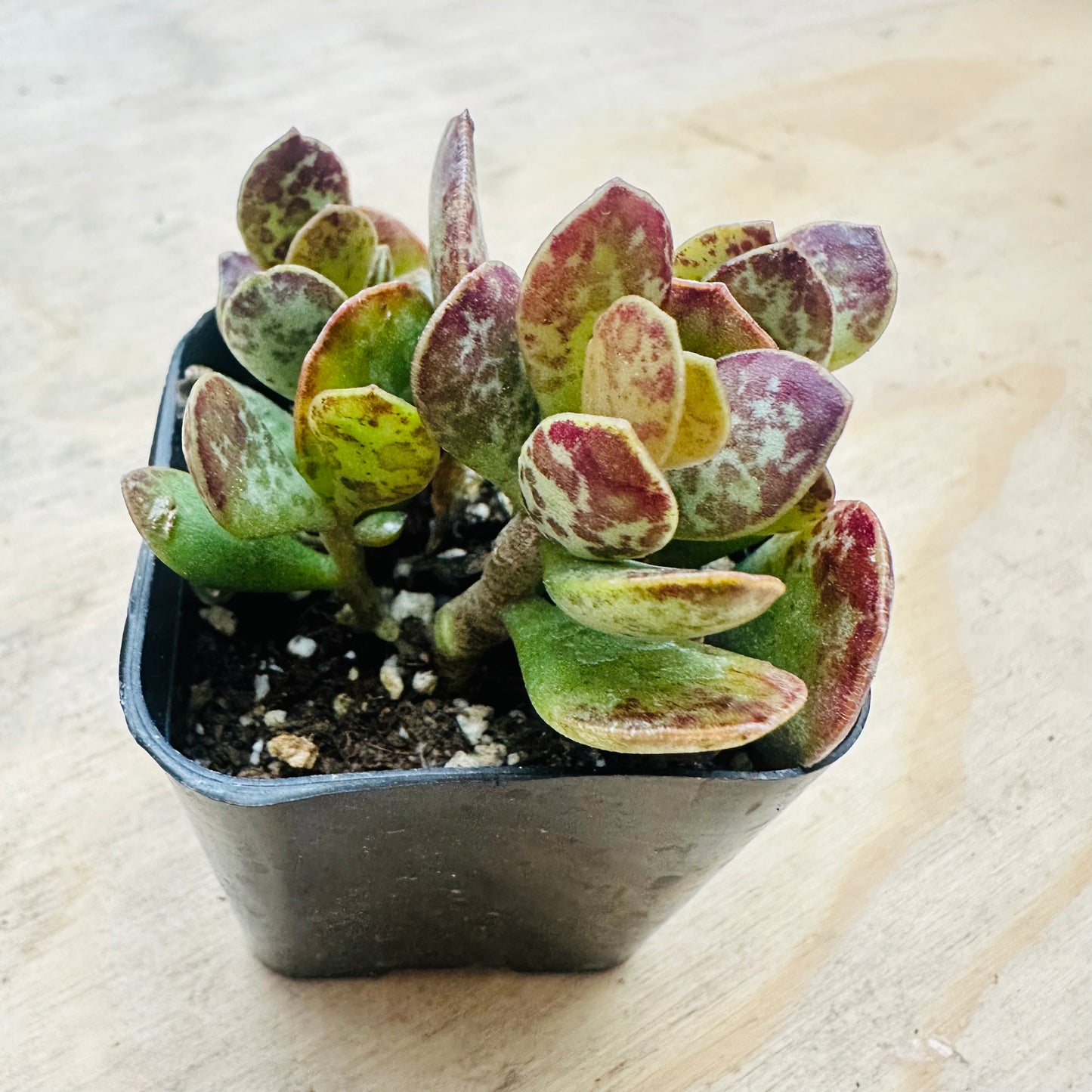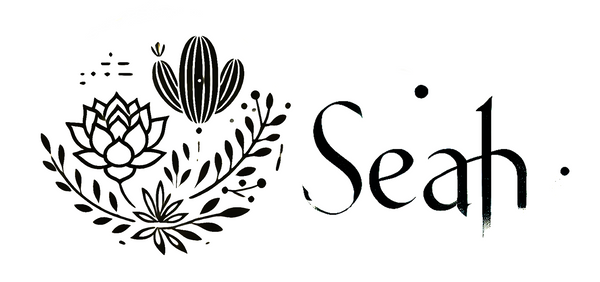Seah
Adromischus maculatus
Adromischus maculatus
In stock
Couldn't load pickup availability
Morphological Characteristics
Adromischus maculatus, commonly known as the Calico Hearts or Chocolate-drop Plant, is a unique and visually appealing succulent species from the Crassulaceae family. Native to the Little Karoo region of South Africa, it is prized for its distinctive leaf markings and compact, clumping form.
This small succulent features thick, flat, paddle-shaped leaves that are typically green to gray-green, adorned with irregular reddish-brown or purplish spots. These spots vary greatly in density and pattern, giving each plant a unique look. Leaves grow in opposite pairs on short stems and are coated with a fine, powdery bloom (farina) that helps reduce water loss.
Mature plants reach about 10–15 cm (4–6 inches) in height and slowly spread through basal growth. In summer, Adromischus maculatus produces slender flower stalks (up to 30 cm / 12 inches tall) topped with small tubular greenish-white to pinkish flowers, although it is mostly cultivated for its foliage.
Growth Habits
Adromischus maculatus grows slowly and stays compact, forming a tight, basal clump of upright stems. Its unique markings make it highly valued by collectors. It’s perfect for small containers, rock gardens, or windowsill displays, especially in dry, sunny locations.
Maintenance Points
• Lighting: Prefers bright, indirect light to full sun. Strong light helps maintain its leaf color and compact form. Indoors, place near a south- or east-facing window. Avoid harsh midday sun in very hot climates.
• Watering: Water sparingly. Allow the soil to dry out completely between waterings. Overwatering can cause root rot or leaf drop. In winter, reduce watering significantly.
• Soil: Requires a very well-draining mix, such as cactus soil amended with perlite, pumice, or coarse sand. Good drainage is essential.
• Temperature: Thrives in 18–27°C (65–80°F). Tolerates mild cold if kept dry but should be protected from frost (below 4°C / 40°F).
• Fertilization: Feed once a month during the growing season (spring to early fall) with a diluted, balanced succulent fertilizer.
• Potting: Use small pots with drainage holes. Repot every 2–3 years in spring to refresh soil and inspect root health.
• Humidity: Prefers low humidity. Ensure good airflow around the plant, and avoid misting the leaves.
Reproduction Method
1. Leaf Cuttings (most common):
• Selection: Gently twist off a healthy leaf from the base.
• Callusing: Allow to dry for 3–5 days until the wound forms a callus.
• Planting: Lay on the surface of dry soil. Mist lightly until roots and small rosettes form at the base.
2. Offsets:
• With time, the plant may develop small basal offsets that can be gently removed and replanted.
3. Seeds:
• Possible but rarely used; germination is slow and less reliable than vegetative propagation.
Additional Tips
• Pest Control: Susceptible to mealybugs and spider mites, particularly in crowded conditions. Use neem oil or insecticidal soap as needed.
• Disease Prevention: Avoid water sitting in leaf axils or rosettes. Ensure soil never stays soggy.
• Pruning: Remove any dried leaves or old flower stalks to keep the plant looking clean and healthy.
• Display: Pairs well with muted-tone succulents or used as a patterned accent in artistic or geometric succulent arrangements.
• Safety Note: Non-toxic to pets and humans. Handle gently to avoid breaking the brittle leaves.
With its chocolate-spotted leaves, compact size, and low maintenance needs, Adromischus maculatus is a collector’s favorite and a charming choice for any sunny spot indoors or outdoors in mild climates.




